Time to take stock
I’ve written about stocks a couple of times for newspapers and maybe even here in e-gardens. I’ve told you how they look like heavyweight snapdragons, and how they’re fragrant and commonly used in flower arranging. They grow well in full sun, rich and well-draining soils, and probably used as a middle or background flower behind shorter frost-tolerant annuals. They’re great as centerpiece plants (the “thrillers”) in large patio pots.
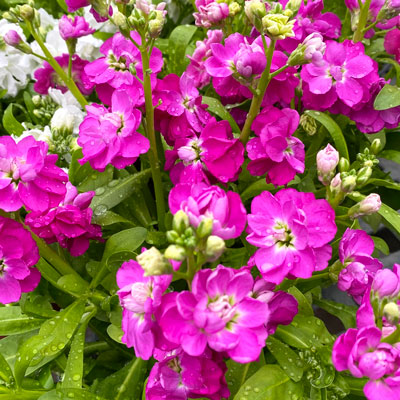
Maybe you remember those comments. Likely you don’t. They’re not very common in Texas gardens. Most folks out on the street probably don’t even know them by name.
I decided to try my little bit at changing that by listing their history. It’s going to cover several centuries in just a few sentences.
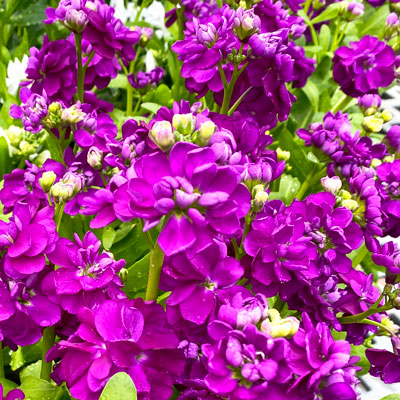
Stocks are native to southern Europe and along the Mediterranean. They were first grown in cultivation 500 years ago, but even to this day their popularity has pretty much been limited to Europe.
The plant breeders, however, have moved in. I met stocks as a teenager when Prof. DeWerth grew them outside the A&M Floriculture greenhouses. I spent a lot of time there ogling the flowers, and this one caught my eye. But they were tall and lanky and the colors were not dazzling at all.
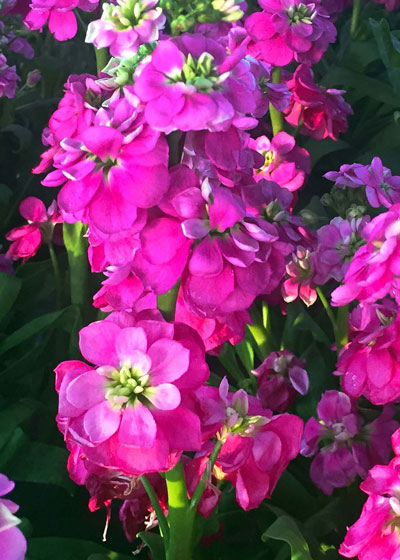
Little by little the sizes have come down over the past 50 years. The color choices have improved greatly. More and more double-flowering types have been brought into the market.
I wondered who had done all that work, so I asked AI to do a little research for me. I wasn’t interested in a copy-and-paste story. I’d never do that to you. But I knew that it would bring back Internet information on commercial breeders that I’d never find.
Sure enough!
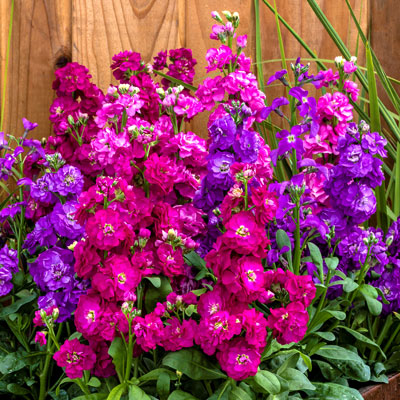
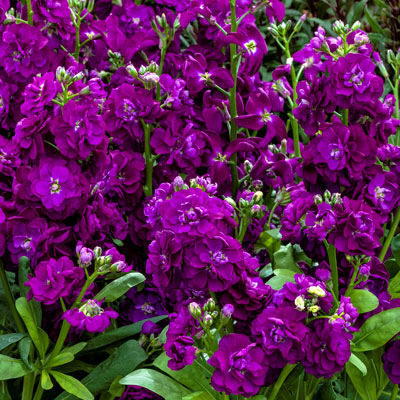
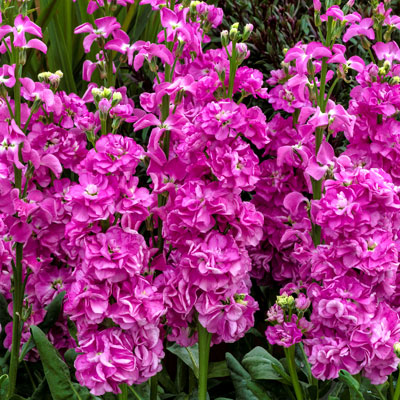
From Sakata Seed – Mime Mix, Mime Blue, and Mime Pink stocks.
Sakata Seeds based in California (but originally from Japan early last century) has done yeoman’s work in bringing us “new and improved” types of stocks. While I was reading up on their work on stocks, I drifted off to look at their entire catalog of introductions. Oh, my gosh! Do that sometime. It’s just amazing. You’ll see their varieties of all types of annuals in leading nurseries all across Texas.
And then there is Dümmen Orange. Odd name for a horticultural company, one that formed only 10 years ago. They’re based in The Netherlands, and they describe themselves as “a leading global breeder and propagator of ornamental flowers and plants.” They employee, according to their website, more than 6,600 people worldwide.
(Personal side note: Dümmen Orange’s North American headquarters is at 250 S. High Street, Columbus, Ohio. That’s about 1 mile from where I met my wife at Ohio State. In another life I might have ended up working for them!)
I thought you might enjoy seeing what horticultural research looks like in The Netherlands. Take at look at this very short video from the Dümmen Orange greenhouses and labs.
So, Chat GPT took me behind the scenes of those two seed-breeding giants.
Watch for their stocks and other lovely annuals the next time you go garden shopping.
And if you want to do a little research on your own, I have one new hint to offer from what I learned today. If you’re Googling “Sakata” or “Dümmen Orange” and you want to know more about their stocks, use the scientific name of the plant (Matthiola) instead of the word “stocks.” Ignore me. You’ll see why I warned you. (These companies are big items in the securities markets.)

